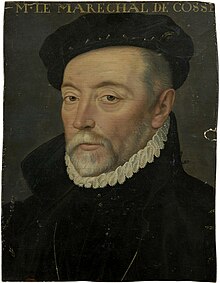
The French Wars of Religion were a series of civil wars between French Catholics and Protestants from 1562 to 1598. Between two and four million people died from violence, famine or disease directly caused by the conflict, and it severely damaged the power of the French monarchy. One of its most notorious episodes was the St. Bartholomew's Day massacre in 1572. The fighting ended with a compromise in 1598, when Henry of Navarre, who had converted to Catholicism in 1593, was proclaimed King Henry IV of France and issued the Edict of Nantes, which granted substantial rights and freedoms to the Huguenots. However, Catholics continued to disapprove of Protestants and of Henry, and his assassination in 1610 triggered a fresh round of Huguenot rebellions in the 1620s.
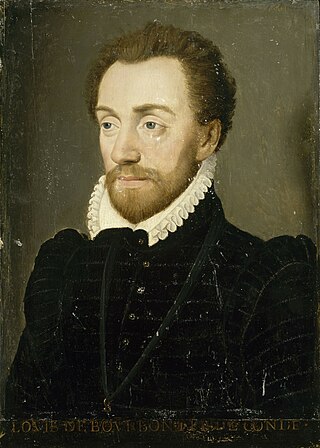
Louis de Bourbon, 1st Prince of Condé was a prominent Huguenot leader and general, the founder of the Condé branch of the House of Bourbon. Coming from a position of relative political unimportance during the reign of Henri II, Condé's support for the Huguenots, along with his leading role in the conspiracy of Amboise and its aftermath, pushed him to the centre of French politics. Arrested during the reign of Francis II then released upon the latter's premature death, he would lead the Huguenot forces in the first three civil wars of the French Wars of Religion before being executed after his defeat at the Battle of Jarnac in 1569.

François de Montmorency, 2nd Duke of Montmorency was a French noble, governor, diplomat and soldier during the latter Italian Wars and the early French Wars of Religion. The son of Anne de Montmorency, favourite of the king and Madeleine of Savoy, Montmorency began his political career during the coronation of Henri II in 1547. With the resumption of the Italian Wars in 1551 he fought at the capture of Chieri, the famous defence of Metz and the defence of Thérouanne. In the latter engagement he was captured by Imperial forces, and put up for ransom. He would spend the next three years in captivity before returning to France in 1556. Returning to the conflict immediately he participated in the disastrous Saint-Quentin campaign in which the French army was destroyed and his father captured. After serving as a lieutenant in Picardie he found himself gaining advantage on the death of Henri II, the new Guise regime compensating the Montmorency family for their seizure of the grand maître title with the provision of a Marshal baton to Montmorency.
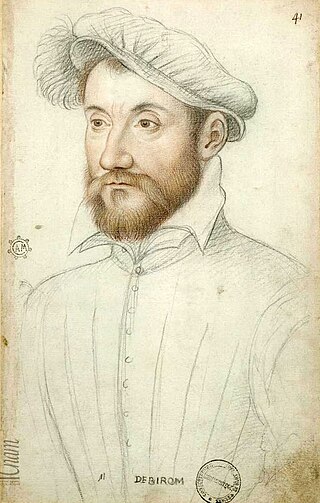
Armand de Gontaut, Baron of Biron was a soldier, diplomat and Marshal of France. Beginning his service during the Italian Wars, Biron served in Italy under Marshal Brissac and Guise in 1557 before rising to command his own cavalry regiment. Returning to France with the Peace of Cateau-Cambrésis he took up his duties in Guyenne, where he observed the deteriorating religious situation that was soon to devolve into the French Wars of Religion. He fought at the Battle of Dreux in the first civil war. In the peace that followed he attempted to enforce the terms on the rebellious governorship of Provence.

Jacques de Savoie, duc de Nemours was a French military commander, governor and Prince Étranger. Having inherited his titles at a young age, Nemours fought for king Henri II during the latter Italian Wars, seeing action at the siege of Metz and the stunning victories of Renty and Calais in 1554 and 1558. Already a commander of French infantry, he received promotion to commander of the light cavalry after the capture of Calais in 1558. A year prior he had accompanied François, Duke of Guise on his entry into Italy, as much for the purpose of campaigning as to escape the king's cousin Antoine of Navarre who was threatening to kill him for his extra-marital pursuit of Navarre's cousin.

Jacques d'Albon, Seigneur de Saint-André was a French governor, Marshal, and favourite of Henri II. He began his career as a confident of the dauphin during the reign of François I, reared with the prince under the governorship of his father at court. In 1547 at the advent of Henri's reign he was appointed as his father's deputy, serving as lieutenant general for the Lyonnais. Concurrently he entered the king's conseil privé and was made a Marshal and Grand Chamberlain.
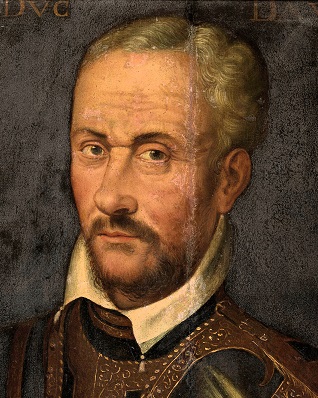
Claude II de Lorraine, duc d'Aumale was a Prince étranger, military commander and French governor, during the latter Italian Wars and the early French Wars of Religion. The son of the first Duke of Guise he started his career in a pre-eminent position in French politics as a son of one of the leading families in the court of Henri II of France. Upon the death of his father in 1550, Aumale inherited the governorship of Burgundy from his father, and the duchy of Aumale from his brother who assumed the titles of Guise. Aumale was made colonel-general of the light horse by the new king and fought in Italy, Alsace and Picardie between 1551 and 1559. While leading the light cavalry during the defence of Metz he was captured, and held for the next two years, until his mother in law Diane de Poitiers paid his ransom. He achieved success at the siege of Volpiano and played an important role in the capture of Calais for which he was rewarded with the governorship of French Piedmont.

René de Birague was an Italian then French noble, lieutenant-general, chancellor and cardinal during the latter Italian Wars and the French Wars of Religion. Born to a prominent Milanese family in 1506, his family sided with the French, and as such when Milan was occupied by Emperor Charles V they were forced to flee to French controlled Piedmont. Declared a criminal in 1536, his Milanese estates would be seized. Birague entered French service in the 1540s, being elevated to premier président of the Parlement of Turin, which in combination with his service under the French governor Marshal Brissac from 1550, afforded him immense administrative power in the French occupied territories. In 1562 with the French withdrawal from the Piedmont, he departed his post in the Parlement, however the following year would see him elevated in one of the remaining French held towns, as leader of the Supreme Council of Pignerol.

The Peace of Saint-Germain-en-Laye was signed on 8 August 1570 by Charles IX of France, Gaspard II de Coligny and Jeanne d'Albret, and ended the 1568 to 1570 Third Civil War, part of the French Wars of Religion.

The Battle of Saint-Denis was fought on 10 November 1567 between a Royalist army and Huguenot rebels during the second of the French Wars of Religion. Although their 74 year old commander, Anne de Montmorency, was killed in the fighting, the Royalists forced the rebels to withdraw, allowing them to claim victory.

Gaspard de Saulx, sieur de Tavannes was a French Roman Catholic military leader during the Italian Wars and the French Wars of Religion. He served under four kings during his career, participating in the Siege of Calais (1558) and leading the royal army to victory in the third civil war at the Jarnac and Moncontour. A strong Catholic, he founded the confraternity of the holy ghost in 1567 which would be a template for other militant Catholic organisations across France. He died in 1573, shortly after the opening assassinations of the Massacre of Saint Bartholomew, which he had helped plan.

The Edict of Amboise, also known as the Edict of Pacification, was signed at the Château of Amboise on 19 March 1563 by Catherine de' Medici, acting as regent for her son Charles IX of France. The Edict ended the first stage of the French Wars of Religion, inaugurating a period of official peace in France by guaranteeing the Huguenots religious privileges and freedoms. However, it was gradually undermined by continuing religious violence at a regional level and hostilities renewed in 1567.
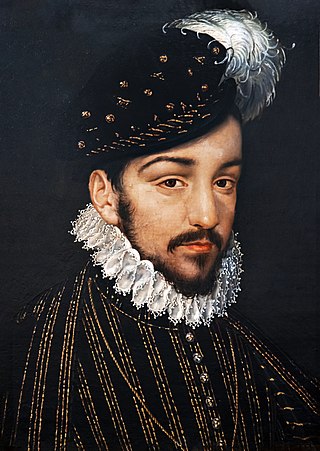
The Peace of Longjumeau was signed on 23 March 1568 by Charles IX of France and Catherine de' Medici. The edict brought to an end the brief second French Wars of Religion with terms that largely confirmed those of the prior edict of Amboise. Unlike the previous edict it would not be sent to the Parlements to examine prior to its publication, due to what the crown had felt was obstructionism the last time. The edict would not however last, and it would be overturned later in the year, being replaced by the Edict of Saint-Maur which outlawed Protestantism at the beginning of the third war of religion.

Charles de Bourbon, Cardinal de Bourbon, Archbishop of Rouen was a French noble, prelate and disputed King of France as the Catholic Ligue candidate from 2 August 1589 – 9 May 1590. Born the third son of Charles of Bourbon, Duke of Vendôme and Françoise d'Alençon he was destined for a career in the church. As a member of the House of Bourbon-Vendôme he was one of the premier Prince du sang. Already having secured several sees, he was made a Cardinal by Pope Paul III in January 1548. In 1550 he received the office of Archbishop of Rouen making him the Primate of Normandy. The following year the promotion of Bourbon to Patriarch of the French church was threatened by King Henry II to secure concessions from the Pope. During the Italian Wars which resumed that year, Bourbon played a role by supporting Catherine de Medici's regency governments in France and briefly holding a lieutenant-generalship in Picardy. In 1557 the Pope appointed the Cardinals Bourbon, Lorraine and Châtillon as the leaders of an inquisition in France to root out heresy. The effectiveness of their inquisition would be obstructed by both the king and the Parlements and by July 1558 their appointments were voided by the Parlement of Paris.
Roger de Saint-Lary, baron de Bellegarde (1525-1579) was a soldier and Marshal of France. Rising to prominence as a favourite of Henri III he was quickly elevated to high office, becoming Marshal in 1574. Tasked with leading the main royal army in the fifth war of religion, he was not able to achieve success and the army disintegrated while he attempted to besiege Livron. Fighting again for the crown in 1577 he remained unable to achieve notable success on the battlefield. Having attempted to seize the Marquisate of Saluzzo which he had relinquished in hopes of attaining the governorship of Languedoc, he was granted the territory in a mediated settlement overseen by the duke of Savoy in October 1579. Several months later he would be dead.
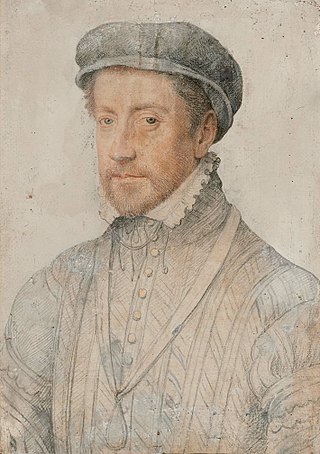
Louis de Bourbon, Duc de Montpensier was the second Duke of Montpensier, a French Prince of the Blood, military commander and governor. He began his military career during the Italian Wars, and in 1557 was captured after the disastrous battle of Saint-Quentin. His liberty restored he found himself courted by the new regime as it sought to steady itself and isolate its opponents in the wake of the Conspiracy of Amboise. At this time Montpensier supported liberalising religious reform, as typified by the Edict of Amboise he was present for the creation of.

The surprise of Meaux was a failed coup attempt by leading aristocratic Huguenots which precipitated the second French War of Religion. Dissatisfied with their lot, and under the pretext of fear of extermination, Louis, Prince of Condé and Gaspard II de Coligny plotted to seize the king, Charles IX, while he was staying near Meaux. Alerted by the mustering of the Huguenots, the royal court made a dash for Paris, fighting off attempts to break through to them en route. Their plan foiled, the Huguenots laid siege to the city, beginning the second war. The event would be of lasting importance in the reputation it gave its architects for sedition.

Albert de Gondi, duc de Retz seigneur du Perron, comte, then marquis de Belle-Isle (1573), duc de Retz, was a marshal of France and a member of the Gondi family. Beginning his career during the Italian Wars he fought at the Battle of Renty in 1554, and in many of the campaigns into Italy in the following years, before returning to France for the disastrous battle of Saint-Quentin and battle of Gravelines both of which saw the French army savaged.

The siege of Orléans was the final key military engagement of the first French Wars of Religion. Having lost the Battle of Dreux the rebel Huguenots fell back with their remaining forces to the city. François, Duke of Guise, the only non captive royal commander, moved to lay siege to the town, hoping its capitulation would bring about a total victory for the crowns forces. However, despite reducing the suburbs, he would be assassinated at the siege before he could bring it to a conclusion. As a result the captive Louis, Prince of Condé and Anne de Montmorency at Catherine de' Medici's direction were able to negotiate a compromise end to the first war in the Edict of Amboise.
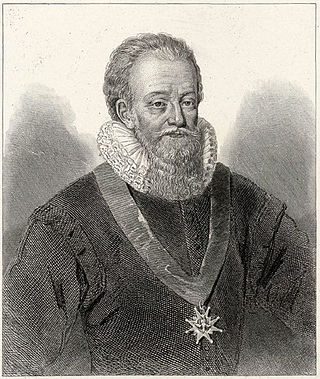
Charles de Montmorency, Duke of Damville was a French aristocrat, military commander, rebel and Admiral during the French Wars of Religion. Damville was the son of Anne de Montmorency, chief favourite of Henri II and Madeleine of Savoy granting him a central place in French politics. As a result in 1562 he was elevated as lieutenant-general of the Île de France, serving under his elder brother François de Montmorency. In 1567, with the establishment of the king's brother Anjou as lieutenant-general of the French army, Méru joined his council to advise him on political matters. Méru participated in the siege of La Rochelle in 1573 under the direction of Anjou. Around this time he developed a proximity to the younger brother of the king Alençon.
